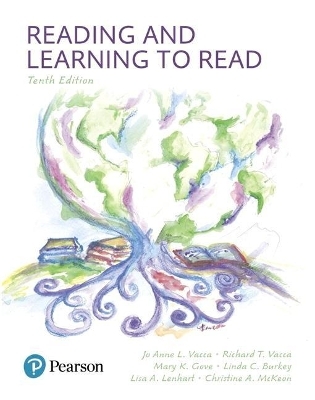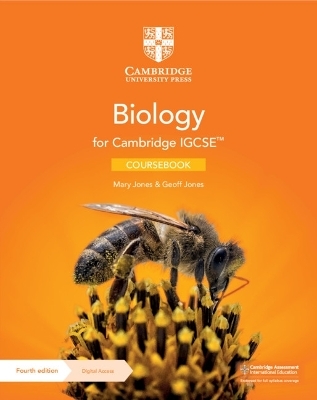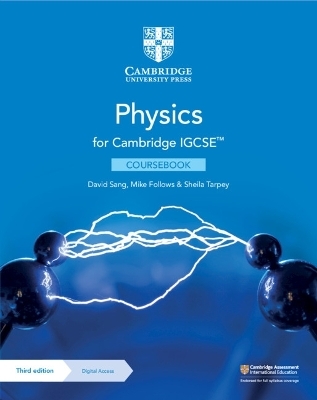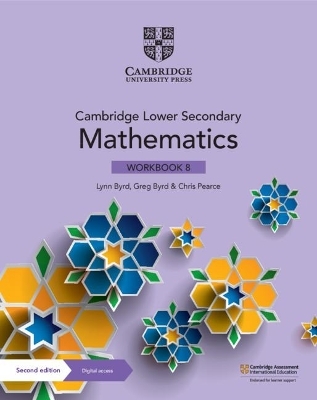
Revel for Reading and Learning to Read -- Access Card Package
Pearson
978-0-13-499698-1 (ISBN)
- Titel z.Zt. nicht lieferbar
- Versandkostenfrei innerhalb Deutschlands
- Auch auf Rechnung
- Verfügbarkeit in der Filiale vor Ort prüfen
- Artikel merken
With a focus on helping elementary reading teachers master teaching skills that will help all children succeed, Revel Reading and Learning to Read includes philosophies, teaching strategies, and assessment practices reflecting and underscoring the concepts of evidence-based reading research and data-driven decision-making. The new 10th Edition is completely up to date; integrates the 2017 ILA Standards and Common Core State Standards (CCSS) initiative throughout the text; features the English Language Arts (ELA) standards respectively as they relate to the content in each chapter; and continues the focus on the applications of technology to literacy instruction, including new coverage of how transliteracies are transforming the way children comprehend and express their understanding of the world.
NOTE: This package includes access to a Revel access card that will provide access to the REVEL version of this title. In addition to this access card, you will need a course invite link, provided by your instructor, to register for and use REVEL.
0134996984 / 9780134996981 Revel Reading & Learning to Read --Access Card Package, 10/e
Package consists of:
0134447735 / 9780134447735 Reading & Learning to Read, 10e -- Revel Access Card
0134894642 / 9780134894645 Reading & Learning to Read, 10e
Richard and Jo Anne Vacca are professors emeriti in the School of Teaching, Leadership, and Curriculum Studies in the College and Graduate School of Education, Health, and Human Services at Kent State University. They met as undergraduate English majors at SUNY–Albany and have been partners ever since. Jo Anne taught middle school language arts in New York and Illinois and received her doctorate from Boston University. Rich taught high school English and earned his doctorate at Syracuse University. He is a past president of the International Reading Association. The Vaccas have a daughter, Courtney; son-in-law, Gary; and grandsons, Simon, Max, and Joe. They volunteer, golf, and walk their toy poodles, Tiger Lily, Gigi, and Joely, in Vero Beach, Florida. Mary Gove is an associate professor at Cleveland State University in the graduate literacy education program and served as a co-author on the early editions of Reading and Learning to Read. Her research interests include action research and how teachers’ beliefs about teaching and learning influence classroom practice and teacher efficacy. Dr. Gove has also presented papers at various conferences and seminars worldwide. A recent area of focus for Dr. Gove has been ecological critical literacy (ECL), an approach to enhance how we read and critically think about published and broadcasted information about the present environmental depletion of natural resources. Linda Burkey is a professor of education at the University of Mount Union in Alliance, Ohio. She is also the current appointee of the endowed Lester D. Crow Professorship in Education. Dr. Burkey teaches courses in the areas of reading methods, reading assessment, and special education. Prior to receiving her Ph.D. from Kent State University, Dr. Burkey taught special and elementary education. Her areas of interest in research include reading assessment and adolescent literacy. Dr. Burkey enjoys traveling and spending time with her family. She is a proud grandmother of Maura, Aubrey, and Ryan. Lisa Lenhart is a professor of literacy in the College of Education at The University of Akron. She works with doctoral students and is the director of the Center for Literacy. As a former elementary school teacher and Title I reading teacher, Dr. Lenhart focuses her scholarship on early literacy development and has co-written several books, including Oral Language and Early Literacy in Preschool and Early Literacy Materials Selector (ELMS): A Tool for Review of Early Literacy Program Materials. Dr. Lenhart received her PhD from Kent State University. In her free time, Dr. Lenhart enjoys hiking and reading. She is the mother of young adult daughters, Hannah and Emma. Christine McKeon is a professor of early and middle childhood reading education at Walsh University in North Canton, Ohio. She holds a Ph.D. from Kent State University where she studied under the mentorship of Drs. Rich and Jo Anne Vacca. Chris is a former second-grade teacher and Title I reading teacher, as well as high school reading teacher. She is a former co-editor of the Ohio Reading Teacher, an IRA-affiliated professional journal. She has also authored and co-authored numerous professional literacy articles and chapters in contemporary professional publications. Dr. McKeon's current interests focus on technology and new literacies. She is especially grateful to her son, Jimmy, for designing the cover for the tenth edition of Reading and Learning to Read!
Brief Contents
Chapter 1 Knowledge and Beliefs about Reading
Chapter 2 Approaches to Reading Instruction
Chapter 3 Meeting the Literacy Needs of Diverse Learners
Chapter 4 Foundations of Language and Literacy
Chapter 5 Assessing Reading Performance
Chapter 6 Word Identification
Chapter 7 Reading Fluency
Chapter 8 Vocabulary Knowledge and Concept Development
Chapter 9 Comprehending Narrative Text
Chapter 10 Comprehending Informational Text
Chapter 11 Reading—Writing Connections
Chapter 12 Bringing Children and Text Together
Chapter 13 Instructional Materials
Table of Contents
Features
Preface
Knowledge and Beliefs About Reading
The Importance of Belief Systems
Different Beliefs, Different Instructional Decisions
Differing Instructional Decisions
Reading Instruction and Teachers’ Belief Systems
National Initiatives
Teacher Preparation
Transliteracy
Multiple Approaches to Reading Instruction
How Teachers Come to Know About Reading and Learning to Read
Constructing Personal Knowledge
Constructing Practical Knowledge
Constructing Professional Knowledge and Expertise
Perspectives on Learning to Read
Cognitive Insights into Reading and Learning to Read
The Alphabetic Principle and Learning to Read
Schema Theory and Reading Comprehension
Metacognition and Learning
Reading from a Language Perspective
Psycholinguistics and Reading
Sociolinguistics and Reading
Models of Reading
Bottom-Up Models
Top-Down Models
Interactive Models
RTI for Struggling Readers
What About: Standards, Assessment, and Knowledge and Beliefs about Reading?
Summary
Teacher Action Research
Through the Lens of the Common Core
Approaches to Reading Instruction
Belief Systems and Approaches to Literacy Instruction
Beliefs About Reading
Curriculum Perspectives
Bottom-Up Curricula
Readers and Textbooks
Top-Down Curricula
Classroom Conditions for Learning
Instructional Approaches
The Basal Reading Approach
The Language-Experience Approach
Literature-Based Instruction Approaches
Technology-Based Instruction
Technology-Based Instructional
Considerations
Individualizing Instruction
The Integrated Approach
Expertise Matters More than Approach
RTI for Struggling Readers
What About: Standards, Assessment, and Approaches to Reading Instruction?
Summary
Teacher Action Research
Through the Lens of the Common Core
Meeting the Literacy Needs of Diverse Learners
Linguistic Diversity in Literacy Classrooms
Instructional Beliefs About Linguistic Diversity
Instructional Principles for Students Speaking Diverse Languages and Dialects
Instructional Strategies for Students Speaking Diverse Languages
Sheltered English Adaptations
Instructional Conversations
Response Protocol
Wordless Books
Content Area Practices
Dialects
Code-Switching
Dialectical Miscues
Cultural Diversity in Literacy Classrooms
Instructional Beliefs About Cultural Diversity
Instructional Principles for Students from Diverse Cultures
Instructional Strategies for Culturally Diverse Students
Determining Cultural Expectations
Background Knowledge and Motivation
Using Culturally Responsive Read-Alouds
Choosing Quality Multicultural Literature
Fostering Ethnic, National, and Global Identification
Technology-Enhanced Instruction
Academic and Cognitive Diversity in Literacy Classrooms
Instructional Beliefs About Academic and Cognitive Diversity
Instructional Principles for Academic and Cognitive Diversity
Inclusion
Curriculum Compacting
Differentiated Instruction
Instructional Strategies for Students with Diverse Academic and Cognitive Abilities
Multisensory Phonics Strategies
Technology-Based Diagnostic Strategies
Inquiry Learning
Transliteracies
RTI for Struggling Readers
What About: Standards, Assessment, and Diversity?
Summary
Teacher Action Research
Through the Lens of the Common Core
Foundations of Language and Literacy
Literacy Development
How Oral Language Develops
How Reading Develops
Phase 1: Awareness and Exploration
Phase 2: Experimental Reading and Writing
Phase 3: Early Reading and Writing
Phase 4: Transitional Reading and Writing
Phase 5: Independent and Productive Reading and Writing
How Writing Develops
The Importance of Scribbling
Oral Language and Vocabulary
Phonological Awareness
Alphabet Knowledge
Developmental Writing
Print Knowledge
Literate Learning Environments
Creating Literate Learning Environments at Home
Creating Literate Environments in the Classroom
Design of the Classroom Environment
Literacy-Related Play Centers
Facilitating Language and Literacy
Learning About Literacy Through Books
Storybooks
Nonfiction Books
Big Books
E-Books
Class-Made Books
Steps to Follow in Producing Language-Experience Stories
Having Students Dictate Stories
Learning About the Relationships Between Speech and Print
Learning About Features of Written Language
Learning About Letters and Sounds
Recognizing Letters
Phonological Awareness
Phonemic Awareness
Developing Phonemic Awareness in Children
Assessing Language and Literacy in Young Children
Assessing Print Knowledge
Assessing Alphabet Knowledge
Assessing Phonological Awareness and Phonemic Awareness
Assessing Developmental Writing
RTI for Struggling Readers
What About: Standards, Assessment, and Beginning Readers and Writers?
Summary
Teacher Action Research
Through the Lens of the Common Core
Assessing Reading Performance
Toward a Collaborative Framework for Decision Making
Trends in Assessment
High-Stakes Testing
Authentic Assessment
Technology in Assessment
Formal Assessment
Standardized Tests
Types of Test Scores
Types of Tests
Uses of Standardized Test Results
Criterion-Referenced Tests
Informal Assessment
Informal Reading Inventories
Administering an IRI
Recording Oral Reading Errors
Determining Reading Levels
Analyzing Oral Reading Miscues
Running Records
Administering a Running Record
Analyzing Running Records
Kidwatching While Teaching
Anecdotal Notes
Checklists
Interviewing
Other Informal Assessments
Portfolio Assessment
Essential Elements of Portfolios
Implementing Portfolios in the Classroom
Assessment Today and Tomorrow
RTI for Struggling Readers
What About: Standards, Assessment, and Reading Performance?
Summary
Teacher Action Research
Through the Lens of the Common Core
Word Identification
Defining Word Identification
Phases of Development in Children’s Ability to Identify Words
Approaches and Guidelines for Teaching Phonics
Traditional Approaches
Analytic Phonics Instruction
Synthetic Phonics Instruction
Syllables
Contemporary Approaches
Analogy-Based Phonics Instruction
Embedded Phonics Instruction
Guidelines for Contemporary Phonics Instruction
Strategies for Teaching Phonics
Consonant-Based Strategies
Multisensory Activities
Consonant Substitution
Flip Books
Making Words
Word Ladders
Cube Words
Analogic-Based Strategies
Poetry
Making and Writing Words Using Letter Patterns
Spelling-Based Strategies
Word Banks
Word Walls
Word Sorting
Using Meaning and Letter–Sound Information to Identify Words
Strategies for Teaching Context
Cloze Passages
Cloze with Choices Given
Guessing Games
Semantic Gradients and Context Clues
Cross-Checking and Self-Monitoring Strategies
Using Structural Analysis to Identify Words
Strategies for Teaching Structural Analysis
Word Study Notebook
Wall Chart Carousel
Compound Word Cups
Contraction Search
Rapid Recognition of Words
High-Frequency Words
Teaching Function Words
Incremental Rehearsal
Language-Experience Strategy
Word Walls
Environmental Print
Word Games
Literature and Poetry
Teaching Key Words
Group Activities with Key Words
Organizing Word Identification Instruction
Principle 1
Principle 2
Principle 3
Balancing Word Identification Instruction
RTI for Struggling Readers
What About: Standards, Assessment, and Word Identification?
Summary
Teacher Action Research
Through the Lens of the Common Core
Reading Fluency
Defining Oral Reading Fluency
Accuracy in Word Decoding
Automatic Processing
Prosody
Predictability of Reading Materials
Developing Oral Reading Fluency
Strategies for Groups of Students
Choral Reading
Echo Reading
Fluency-Oriented Reading Instruction (FORI)
| Erscheint lt. Verlag | 1.3.2021 |
|---|---|
| Sprache | englisch |
| Maße | 213 x 274 mm |
| Gewicht | 862 g |
| Themenwelt | Schulbuch / Wörterbuch |
| Sozialwissenschaften ► Pädagogik | |
| ISBN-10 | 0-13-499698-4 / 0134996984 |
| ISBN-13 | 978-0-13-499698-1 / 9780134996981 |
| Zustand | Neuware |
| Haben Sie eine Frage zum Produkt? |
aus dem Bereich


